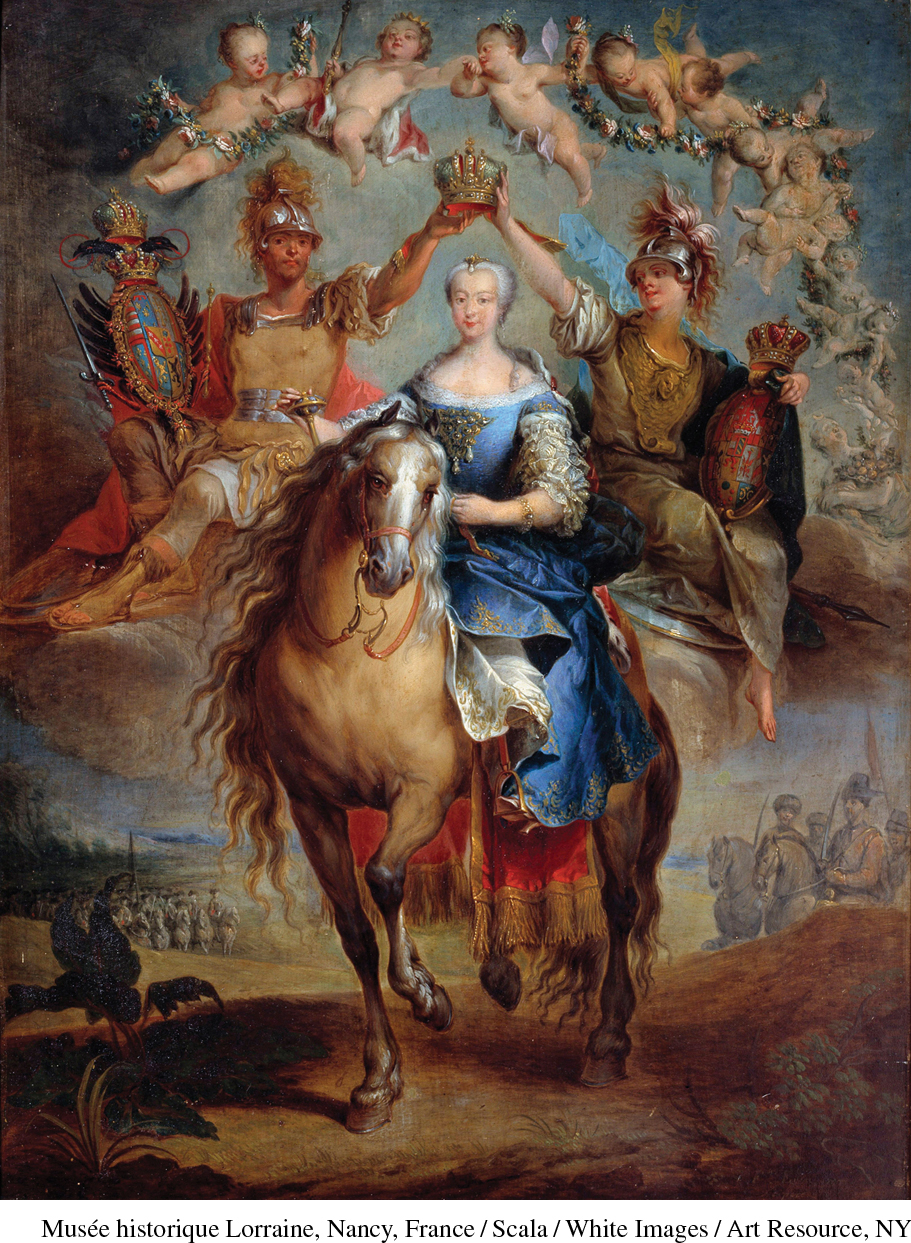State-Sponsored Reform
Printed Page 595
Important EventsState-Sponsored Reform
In the aftermath of the Seven Years’ War, all the belligerents faced pressing needs for more money. To make tax increases more palatable to public opinion, rulers appointed reform-minded ministers and gave them a mandate to modernize government. Such reforms always threatened the interests of traditional groups, however, and the spread of Enlightenment ideas aroused sometimes unpredictable desires for more change.
Monarchs dedicated to reform insisted on greater attention to merit, hard work, and professionalism. In this view, the ruler should be a benevolent, enlightened administrator who worked for the general well-being of his or her people. Frederick the Great, who drove himself as hard as he drove his officials, boasted, “I am the first servant of the state.” A Freemason and supporter of religious toleration, Frederick abolished torture, reorganized taxation, and hosted leading French philosophes at his court. The Prussian king also composed more than a hundred original pieces of music.

Legal reform, both of the judicial system and of the often disorganized and irregular law codes, was central to the work of many reform-minded monarchs. Like Frederick the Great, Joseph II of Austria (r. 1780–1790) ordered the compilation of a unified law code, a project that required many years for completion. Catherine the Great began such an undertaking even more ambitiously. In 1767, she called together a legislative commission of 564 deputies and asked them to consider a long document called the Instruction, which represented her hopes for legal reform based on the ideas of Montesquieu and the Italian jurist Cesare Beccaria. Montesquieu had insisted that punishment should fit the crime; he criticized the use of torture and brutal corporal punishment. In his influential book On Crimes and Punishments (1764), Beccaria argued that justice should be administered in public, that judicial torture should be abolished as inhumane, and that the accused should be presumed innocent until proven guilty. Despite much discussion and hundreds of petitions and documents about local problems, little came of Catherine’s commission.
Rulers everywhere wanted more control over church affairs, and they used Enlightenment criticisms of the organized churches to get their way. In Catholic countries, many government officials resented the influence of the Jesuits, the major Catholic teaching order. Critics mounted campaigns against the Jesuits in many countries, and in 1773, Pope Clement XIV (r. 1769–1774) agreed under pressure to disband the order, an edict that held until a reinvigorated papacy restored the society in 1814. Joseph II of Austria not only applauded the suppression of the Jesuits but also required Austrian bishops to swear fidelity and submission to him. Joseph had become Holy Roman Emperor and co-regent with his mother, Maria Theresa, in 1765. After her death in 1780, he initiated a wide-ranging program of reform. Under him, the Austrian state supervised Catholic seminaries, abolished contemplative monastic orders, and confiscated monastic property to pay for education and poor relief.
Joseph II launched the most ambitious educational reforms of the period. In 1774, once the Jesuits had been disbanded, the General School Ordinance in Austria ordered state subsidies for local schools, which the state would regulate. By 1789, one-quarter of the school-age children attended school. In Prussia, the school code of 1763 required all children between the ages of five and thirteen to attend school. Although not enforced uniformly, the Prussian law demonstrated Frederick the Great’s belief that modernization depended on education.
No ruler pushed the principle of religious toleration as far as Joseph II of Austria, who in 1781 granted freedom of religious worship to Protestants, Orthodox Christians, and Jews. For the first time, these groups were allowed to own property, build schools, enter the professions, and hold political and military offices. Louis XVI signed an edict in 1787 restoring French Protestants’ civil rights—but still, Protestants could not hold political office. Great Britain continued to deny Catholics freedom of open worship and the right to sit in Parliament. Most European states limited the rights and opportunities available to Jews. Even in Austria, where Joseph encouraged toleration, the laws forced Jews to take German-sounding names. The leading philosophes in theory opposed persecution of the Jews but often in practice treated them with undisguised contempt. Diderot’s comment was all too typical: the Jews, he said, bore “all the defects peculiar to an ignorant and superstitious nation.”